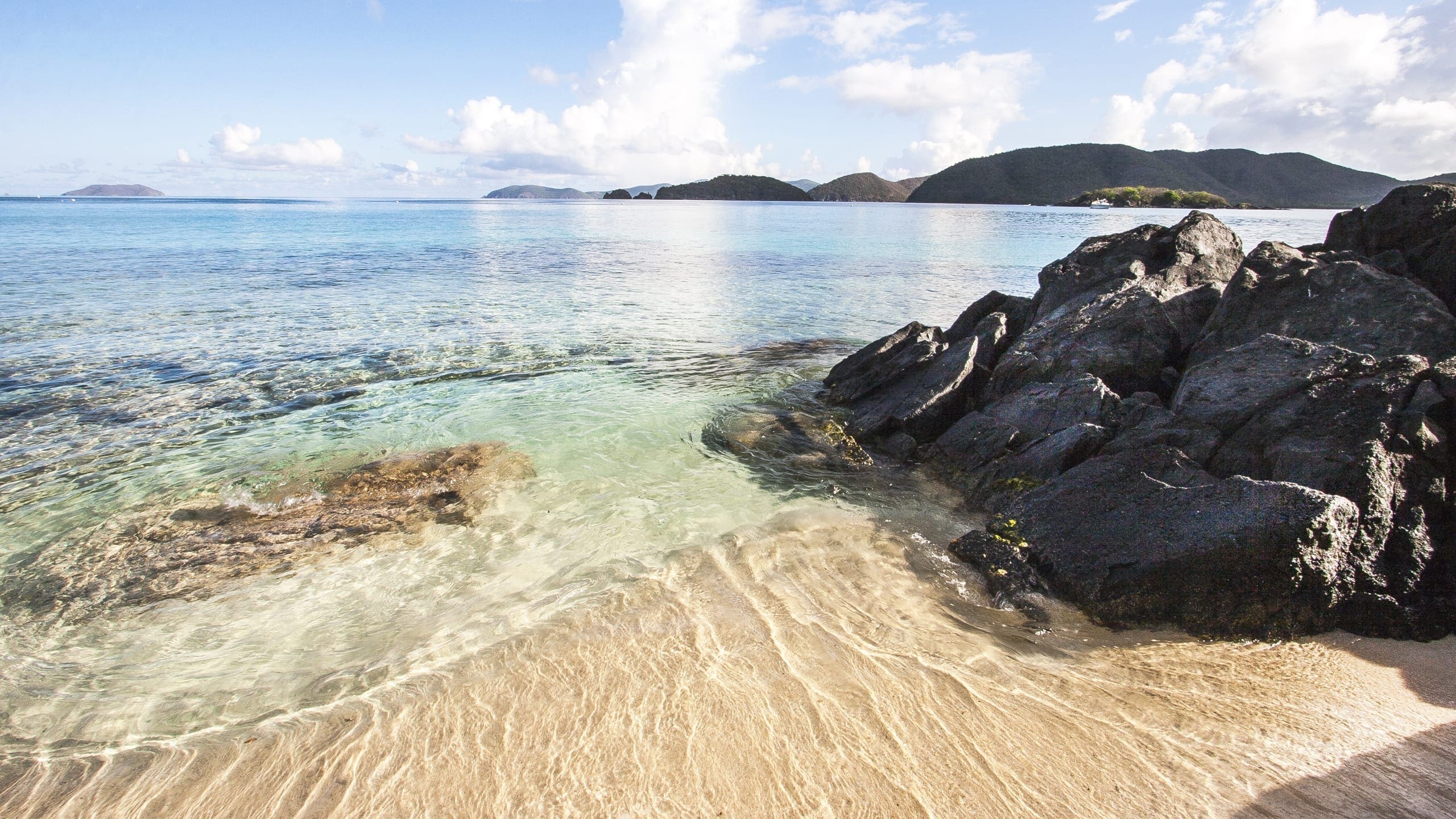About Virgin Islands National Park
Located on St. John, U.S. Virgin Islands, Virgin Islands National Park was established in 1956 and comprises more than half of the mountainous island’s land area. The park includes most of the north shore and most of the central and southeast portions of the island, including 7,259 acres of terrestrial and shoreline habitat and 5,650 acres of adjacent submerged lands (offshore underwater habitat, added to the park in 1962). The park also includes 128 acres on Hassel Island in Charlotte Amalie Harbor on St. Thomas, which was added in 1978. In 2001, Virgin Islands Coral Reef National Monument was established to protect an additional 12,708 acres of submerged lands and associated marine resources around the island. In sum, the National Park Service manages almost 58 percent of the land area of St. John and more than 18,000 acres of offshore underwater habitat.
The park and monument offer protection to coral reefs, seagrass beds, mangroves, and other marine habitats that support sea turtles, corals, and other marine life. Virgin Islands National Park also protects some of the last remaining native tropical dry rain forest in the Caribbean. In 1976, Virgin Islands National Park was designated as an International Biosphere Reserve by the United Nations Educational, Scientific and Cultural Organization (UNESCO). The park was one of the first protected areas in the world to receive this designation. Of the hundreds of UNESCO biosphere reserves worldwide, the park is 1 of only 30 reserves containing both marine and terrestrial ecosystems. It provides vital habitat for approximately130 bird species, 400 reef-associated fish species, 17 species of whales and dolphins, 13 reptile species, numerous sponges, and more than 45 stony coral species. A number of marine and terrestrial species within the boundaries of the park and monument are federally listed as endangered or threatened.
The park units’ cultural resources are abundant and diverse, including prehistoric archeological sites, hundreds of historic structures, offshore shipwrecks, and museum collections that encompass artifacts dating as far back as 840 BC. The Virgin Islands have been inhabited for at least 3,000 years, beginning with hunter-gatherers of the Archaic Period. Settlement continued throughout prehistory and ended with the development of the Taino culture, the pre-Columbian people who were present when Columbus explored the New World. When Europeans arrived, the Virgin Islands became a melting pot, inhabited by people from around the world who came to make a new life on the islands. These colonial settlements date from the 17th century through the 19th century. Visitors can explore the ruins of hundreds of historic structures to get a sense of this rich history.
Source: Foundation Document – Virgin Islands National Park | Virgin Islands Coral Reef National Monument
Fast Facts:
| Date the Park was Established: | August 2, 1956 |
| Park Area (as of 2019): | 15,052.53 acres (60.9 km2) |
| Recreational Visitors (2018 Total): | 112,287 visitors |


